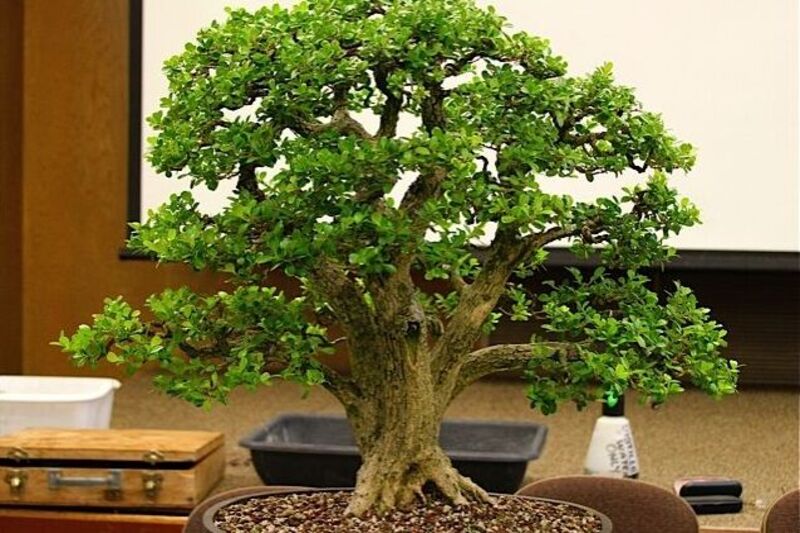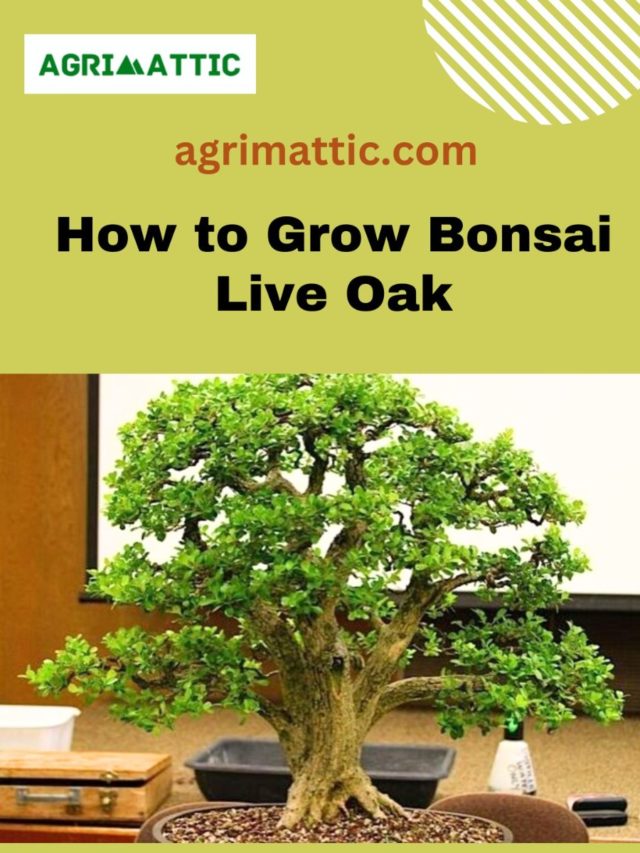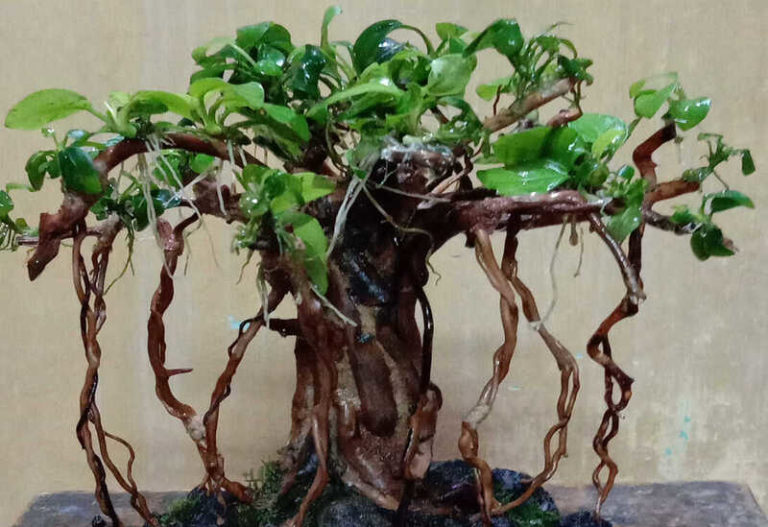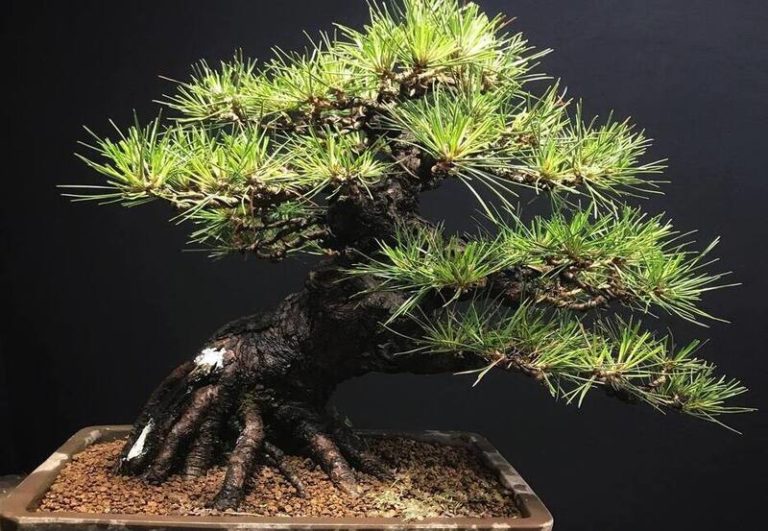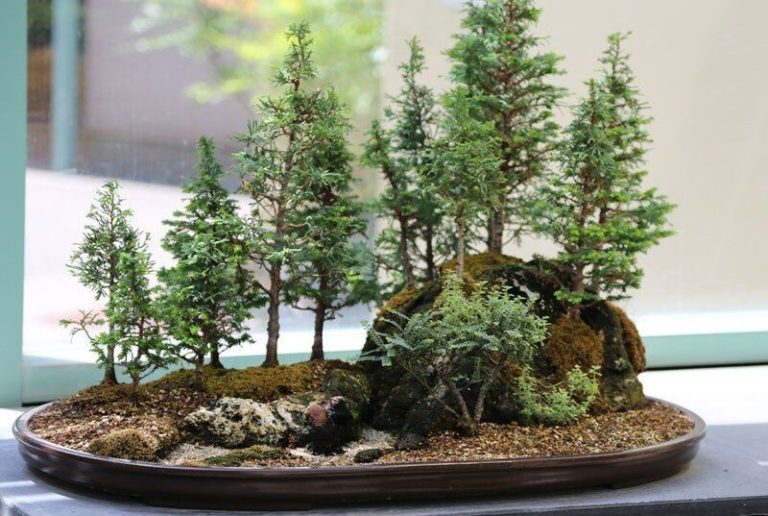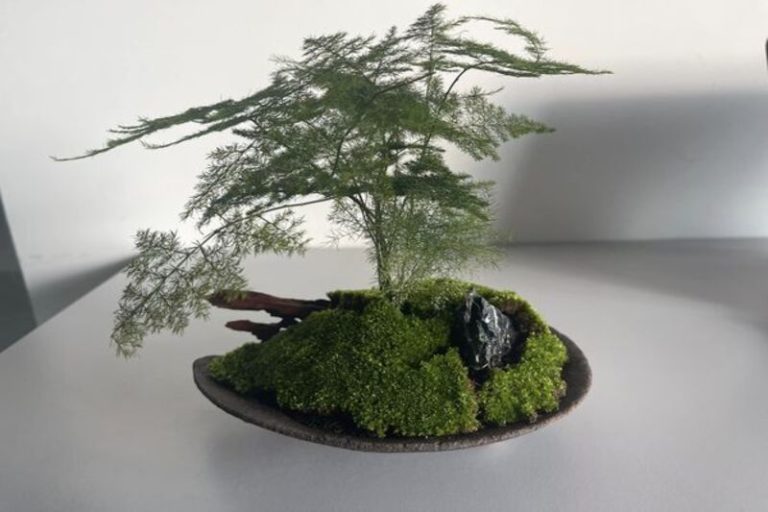Bonsai Live Oak: A Living Work of Art for Your Home or Office
Bonsai Live Oak might be something you’ve heard of if you like house plants. This famous type of bonsai tree is not only beautiful to look at, but it’s also an enjoyable plant to grow. Bonsai Live Oak is a tree that is native to the southern United States and Mexico. It grows slowly and can reach up to 50 feet tall in the wild. As a bonsai, though, it is much smaller and usually only grows to be a foot or two tall.
What is Bonsai Live Oak?
Bonsai Live Oak is a type of bonsai tree that is made from the Live Oak tree, which is native to the southern United States and Mexico. The old Japanese art of bonsai is used to grow a small version of a tree in a small pot, which is how Bonsai Live Oaks are grown.
The result is a small tree with a unique look, including a thick base, small leaves, and complicated spreading patterns. In traditional Japanese society, the bonsai Live Oak is valued for its beauty and because it represents peace, unity, and balance. It’s also easy to care for, which makes it a popular choice among bonsai fans.
Types of Bonsai Live Oak
There are various varieties of Bonsai Live Oak, each with their own distinct qualities. Among the most prevalent varieties are:
- Quercus virginiana: Also known as the Southern Live Oak, this is the most common type of Bonsai Live Oak. It has a thick trunk, small leaves, and a sprawling, natural shape.
- Quercus agrifolia: This type of Bonsai Live Oak is native to California and has a smaller, more compact shape than other varieties.
- Quercus lobata: This Bonsai Live Oak has a distinctive lobed leaf and a thick, gnarled trunk.
- Quercus suber: This type of Bonsai Live Oak is also known as the Cork Oak because of its thick, corky bark. It has a unique appearance and is often used for artistic purposes.
- Quercus alba: Also known as the White Oak, this Bonsai Live Oak has a lighter colored bark and a symmetrical, oval-shaped canopy.
Each variety of Bonsai Live Oak has an own appearance and personality, and the one you pick will be determined by your personal tastes and the style you want to create.
Bonsai Live Oak and Its Symbolism
Bonsai Live Oak has cultural significance and symbolism in traditional Japanese culture. In Japanese, the word “bonsai” means “planted in a container,” and the art of growing bonsai trees is believed to have originated in China and Japan over a thousand years ago.
Bonsai Live Oak, in particular, is considered a symbol of peace, balance, and harmony. The ancient art of cultivating bonsai trees emphasizes the importance of patience, dedication, and respect for nature. These values are reflected in the care and attention required to create and maintain a beautiful Bonsai Live Oak.
In traditional Japanese culture, Bonsai Live Oak is also believed to represent longevity, strength, and stability. The tree’s thick trunk and intricate branching patterns symbolize resilience and the ability to withstand adversity. The small leaves and delicate appearance of the tree represent humility and simplicity, reminding us to appreciate the beauty in the small things in life.
Many people choose to grow Bonsai Live Oak in their homes or businesses to make them feel more peaceful and calm. The tree is a unique and meaningful addition to any indoor area because of its natural beauty and cultural importance.
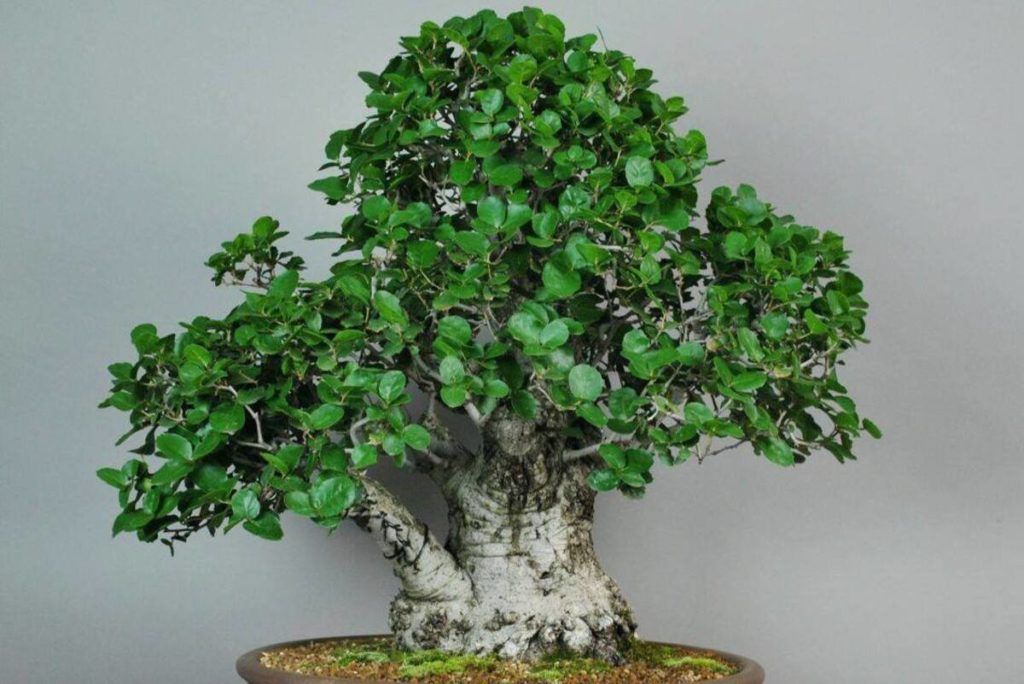
Characteristics of Bonsai Live Oak
Bonsai Live Oak has various distinguishing traits that make it a popular option among bonsai aficionados. Here are some of the important aspects of this small tree:
Thick Trunk: Bonsai Live Oak has a thick trunk that is often gnarled and twisted, giving it a distinctive appearance.
Small Leaves: The leaves of Bonsai Live Oak are small and oval-shaped, which helps to create a delicate and intricate canopy.
Intricate Branching: Bonsai Live Oak has a unique branching pattern that can be manipulated and trained to create a variety of shapes and styles.
Evergreen: Bonsai Live Oak is an evergreen tree, meaning it retains its leaves throughout the year.
Drought Tolerant: Because Live Oak trees are inherently drought tolerant, Bonsai Live Oak requires less water and upkeep than other varieties of bonsai trees.
Longevity: Bonsai Live Oak has a long lifespan and can live for many decades with proper care and attention.
Cultural Significance: Bonsai Live Oak has cultural significance in traditional Japanese culture and is considered a symbol of peace, balance, and harmony.
Overall, Bonsai Live Oak is a beautiful and unique plant that requires patience and dedication to cultivate, but the result is a miniature tree that is both visually striking and culturally significant.
How to Grow Bonsai Live Oak?
Growing Live Oak Bonsai requires perseverance, commitment, and attention to detail, but the experience is rewarding and fulfilling. Here are some guidelines for cultivating Bonsai Live Oak:
- Choose a healthy Live Oak sapling: The first step is to choose a healthy sapling with a thick trunk and small leaves. It’s best to select a sapling that is at least one year old and has been grown in a container.
- Choose a container: Bonsai Live Oak should be planted in a container that is appropriate for its size. The container should have drainage holes to prevent waterlogging.
- Prune and shape the tree: Prune and shape the tree regularly to create the desired shape and style. Use a pair of bonsai shears to trim away any unwanted branches or leaves.
- Water the tree: Bonsai Live Oak should be watered regularly, but it’s important not to overwater the tree. The soil should be allowed to dry out slightly between watering.
- Fertilize the tree: Bonsai Live Oak should be fertilized regularly during the growing season to provide the nutrients needed for healthy growth.
- Repot the tree: Bonsai Live Oak should be repotted every few years to provide it with fresh soil and a larger container.
- Protect the tree: Bonsai Live Oak should be protected from extreme temperatures, strong winds, and direct sunlight.
With the right care and attention, you can grow a beautiful and distinctive miniature live oak tree that will survive for many years. Growing bonsai live oak demands time and attention to detail.
Benefit of Bonsai Live Oak
Growing Bonsai Live Oak can bring several benefits, both practical and aesthetic. Here are some of the key benefits of growing Bonsai Live Oak:
Aesthetic appeal: Bonsai Live Oak is a beautiful and unique plant that can add a touch of natural beauty to any indoor space.
Stress relief: Caring for Bonsai Live Oak can be a relaxing and meditative activity that helps to reduce stress and anxiety.
Educational value: Bonsai Live Oak cultivation provides an opportunity to study botany, horticulture, and the art of bonsai.
Environmental benefits: Bonsai Live Oak can help to improve indoor air quality by absorbing pollutants and releasing oxygen.
Culturally significant: Bonsai Live Oak has cultural significance in traditional Japanese culture and can provide a connection to history and tradition.
Personal satisfaction: Growing and maintaining a Bonsai Live Oak can be a rewarding and fulfilling experience that provides a sense of accomplishment and pride.
Growing bonsai live oak can provide a variety of advantages, including as aesthetic appeal, stress alleviation, educational value, environmental advantages, cultural importance, and personal fulfillment. Growing a Bonsai Live Oak may be a rewarding and enlightening endeavor, regardless of your bonsai expertise.

Styling and Design of Bonsai Live Oak
Styling and designing Bonsai Live Oak is a creative and rewarding process that involves shaping the tree’s trunk and branches to create a unique and aesthetically pleasing form. Here are some of the most common styling and design techniques used in Bonsai Live Oak:
- Formal Upright Style: This style features a straight, upright trunk with symmetrical branching that creates a triangular silhouette.
- Informal Upright Style: This style features a slightly curved or angled trunk that creates a more naturalistic and dynamic form.
- Cascade Style: This style features a trunk that cascades down the side of the container, creating a waterfall-like effect.
- Semi-Cascade Style: This style features a trunk that cascades at a slight angle but does not touch the ground.
- Slanting Style: This style features a trunk that leans at an angle, creating a sense of movement and dynamism.
- Windswept Style: This style features a trunk and branches that appear to have been shaped by strong winds, creating a dramatic and striking form.
Bonsai fans use different methods, such as wiring, trimming, and grafting, to make these styles. Wiring is the process of wrapping the tree’s stems with wire to guide them into the shape you want. During pruning, useless stems and leaves are cut off to give the plant the shape you want. Grafting is when two or more trees are joined together to make one tree with a unique shape.
The design of Bonsai Live Oak can also be enhanced by adding elements such as moss, rocks, and miniature figurines to create a naturalistic and harmonious display.
Overall, styling and designing Bonsai Live Oak requires creativity, patience, and a keen eye for aesthetics. With the proper techniques and tools, bonsai enthusiasts can create beautiful and unique forms that showcase the natural beauty of these miniature trees.
How to Care and Maintain Bonsai Live Oak?
Caring for and maintaining Bonsai Live Oak requires attention to detail and regular care. Here are some tips to keep your Bonsai Live Oak healthy and thriving:
Watering: Bonsai Live Oak should be watered regularly, but be careful not to overwater the tree. Check the soil daily and only water when the soil is dry to the touch. When watering, water thoroughly until water comes out of the drainage holes.
Fertilizing: Bonsai Live Oak should be fertilized regularly during the growing season with a balanced fertilizer. Avoid over-fertilizing, which can damage the roots.
Pruning: Prune your Bonsai Live Oak regularly to maintain its shape and remove any unwanted growth. Use sharp, clean bonsai shears to avoid damaging the tree.
Repotting: Bonsai Live Oak should be repotted every two to three years to provide it with fresh soil and a larger container. Repot in early spring before new growth appears.
Sunlight: Bonsai Live Oak requires plenty of sunlight to grow and thrive. Place your tree in a sunny location, but avoid direct sunlight during the hottest part of the day.
Humidity: Bonsai Live Oak prefers a humid environment. You can increase humidity by placing a tray of water near the tree or misting the leaves with water.
Protection: Bonsai Live Oaks should be kept out of extreme temperatures, strong winds, and full sunshine during the hottest part of the day.
Pests and diseases: Bonsai Live Oak is susceptible to pests and diseases. Check your tree regularly for signs of pests, such as spider mites or scale insects. Treat any pests or diseases promptly with an appropriate insecticide or fungicide.
By following these tips, you can keep your Bonsai Live Oak healthy and thriving for years to come. Remember that Bonsai Live Oak requires regular care and attention, but the effort is well worth it to enjoy the beauty and unique characteristics of this miniature tree.
Bonsai Live Oak care sheet
| Aspect | Care Tips |
|---|---|
| Watering | Water regularly but avoid overwatering; check soil daily |
| Fertilizing | Use a balanced fertilizer during growing season; avoid over-fertilizing |
| Pruning | Prune regularly to maintain shape and remove unwanted growth |
| Repotting | Repot every 2-3 years in early spring |
| Sunlight | Place in a sunny location but avoid direct sunlight during hottest part of day |
| Humidity | Increase humidity by misting leaves or placing tray of water nearby |
| Protection | Protect from extreme temperatures, strong winds, and direct sunlight during hottest part of day |
| Pests and diseases | Check regularly for pests or diseases and treat promptly with appropriate insecticide or fungicide |
Remember, these are just brief care tips, and for more detailed information on caring for Bonsai Live Oak, refer to the previous section on “How to Care and Maintain Bonsai Live Oak.”
Conclusion
The Bonsai Live Oak is a lovely and gratifying plant to grow. It’s a popular option among bonsai aficionados because of its distinct look, cultural value, and very simple maintenance needs. Whether you’re new to indoor gardening or a seasoned plant enthusiast, Bonsai Live Oak is a terrific plant to add to your collection.
FAQ:
Q: What is Bonsai Live Oak?
A: Bonsai Live Oak is a type of bonsai tree that is grown from the live oak species. It is a miniature version of the live oak tree and is typically grown for its ornamental value.
Q: What makes Bonsai Live Oak a good choice for bonsai enthusiasts?
A: Bonsai Live Oak is an excellent choice for bonsai fans since it is a tough tree that can tolerate a wide range of growth conditions. It is also a tree that may live for many years if properly cared for.
Q: What are the different types of Bonsai Live Oak?
A: There are several different types of Bonsai Live Oak, including Southern live oak, California live oak, and Japanese evergreen oak. Each type has its own unique characteristics and growing requirements.
Q: Can Bonsai Live Oak be grown from seeds?
A: Although seeds may be used to develop Bonsai Live Oak, it can take several years for the tree to attain the proper size and shape. Most bonsai aficionados choose to begin with a nursery stock or pre-bonsai shrub.
Q: Can Bonsai Live Oak be shaped into different styles?
A: Yes, Bonsai Live Oak can be shaped into a variety of different styles, including informal upright, formal upright, slanting, and cascading. The style will depend on the shape and growth pattern of the tree.
Q: How long does Bonsai Live Oak typically live?
A: Bonsai Live Oak can live for many years with proper care. Some specimens have been known to live for several hundred years.
Q: Is Bonsai Live Oak easy to care for?
A: Bonsai Live Oak requires regular care and attention, but with proper care, it can thrive for many years. Regular watering, fertilizing, pruning, and protection from extreme temperatures and pests are essential for the health of your Bonsai Live Oak.
Also Read:

